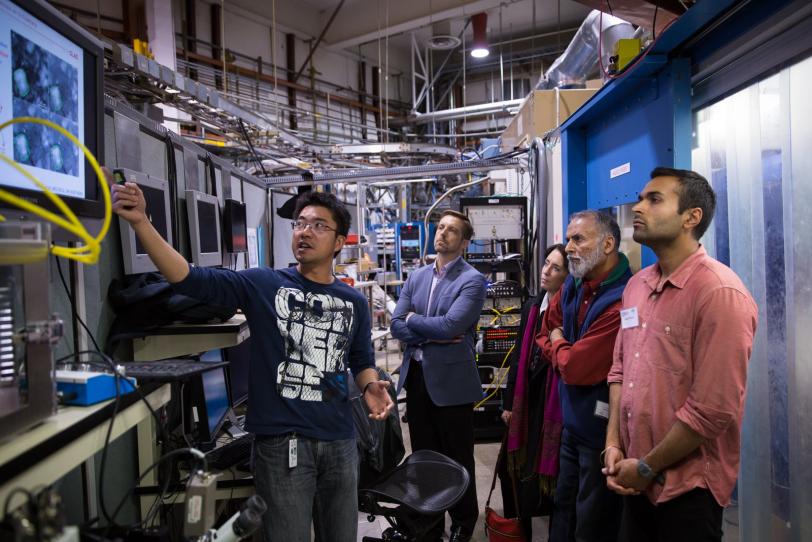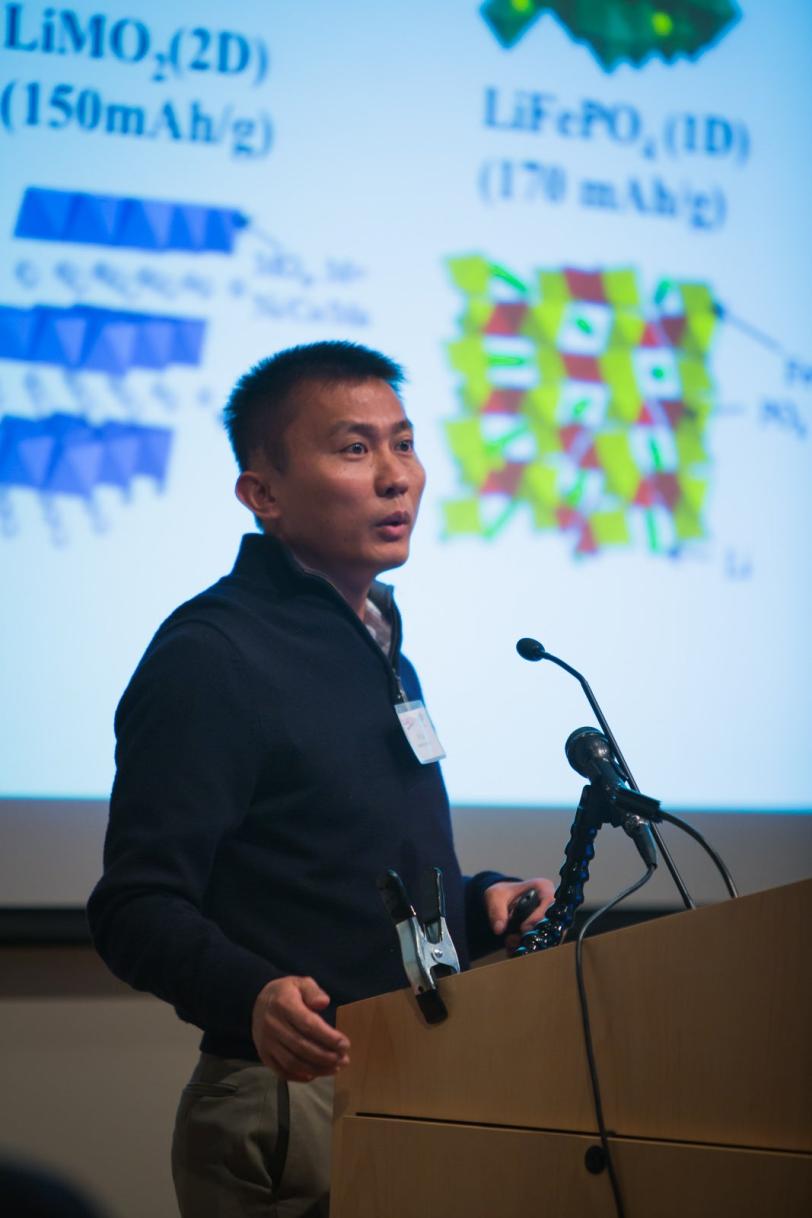Agreement Gives Energy Storage Companies Easier Access to SLAC
CalCharge Members Get Streamlined Access to Battery Research Facilities and Expertise
More than a dozen energy-storage companies now have streamlined access to research facilities and expertise at the Department of Energy’s SLAC National Accelerator Laboratory under a new cooperative research and development agreement, or CRADA.
The agreement, announced Tuesday, is between the lab and CalCharge, a first-of-its-kind public-private partnership aimed at accelerating the development of new battery technologies. Rather than having to negotiate individual CRADAs with the lab, which take six to 24 months to finalize, CalCharge member companies should be able to start their projects just six to eight weeks after making a proposal because their projects will be treated as tasks added to the master CRADA. In addition, up to 10 researchers from CalCharge member companies may be “embedded” at SLAC to take part in more informal and collegial interactions.
“One of SLAC’s missions is to speed up the translation of basic research discoveries into real-world applications,” said SLAC Director Chi-Chang Kao. “By making our facilities available to battery companies through CalCharge, we can help spur dramatic improvements in advanced energy storage manufacturing.”
SLAC Open House
At a Nov. 18 open house introducing SLAC to battery companies and industry officials, CalCharge President Jeff Anderson said the new CRADA provides "the best cost and intellectual property terms any company could hope to achieve."
A key feature for CalCharge members will be access to SLAC’s Stanford Synchrotron Radiation Lightsource (SSRL), a DOE Office of Science User Facility that provides extremely bright X-rays to probe matter on the scale of atoms and molecules. SSRL has already been used to understand changes in the atomic structure and chemical composition of battery electrodes during charge/discharge cycles.
"We aim to be a one-stop shop for your battery research needs," said Kelly Gaffney, SSRL director. "We are collaborative, and routinely apply several different X-ray methods to solve challenging technical problems."
CalCharge Projects at Berkeley Lab
The SLAC master CRADA comes less than seven months after Lawrence Berkeley National Laboratory put a similar agreement with CalCharge into effect. Venkat Srinivasan, head of Berkeley Lab's Energy Storage & Distributed Resources Department, said four new CalCharge projects have already doubled the number of companies his group is working with.
"VW is studying cathode materials, Hitachi is looking at electrode behavior and Halotechnics is researching thermal storage," he said. "VW has even started a second task after they saw something else in the lab. In addition, three more companies are completing their proposals and should be starting soon."
Michael Slater, senior scientist at Farasis Energy, said, “We’re looking forward to using SLAC’s tools to improve our development of advanced lithium-ion batteries. This CalCharge CRADA will help us compete with overseas companies.”
ARPA-E Liaison Announced
Also at Tuesday’s event, Susan Babinec was announced as the DOE Advanced Research Projects Agency for Energy (ARPA-E) liaison to CalCharge. Babinec is the senior commercialization adviser responsible for ARPA-E’s energy storage research portfolio. In her liaison role, she will help CalCharge shape new member services and better align its activities with key ARPA-E programs.
"ARPA-E operates like a startup for DOE," Babinec said. "We sponsor high-risk research typically not funded by conventional sources, and we measure our success by market impact. We’re excited to be collaborating with this innovative and forward-looking CalCharge organization that is jump-starting energy storage in California.”
Created in 2012 by Berkeley Lab and the non-profit California Clean Energy Fund (CalCEF), CalCharge is a public-private partnership that brings together businesses, academic institutions, national labs and unions to develop cutting-edge solutions, from batteries for consumer electronics and electric vehicles to utility-scale energy storage.
CalCharge’s corporate members include Dragonfly Energy, Duracell, Eaton, EnerVault, Enovix, Farasis Energy, Halotechnics, Hitachi, LG, Liox, Primus Power, Volkswagen and ZAF Energy Systems, and it is actively recruiting more.
CalCharge operates as a wholly owned subsidiary of CalCEF Catalyst, a non-profit trade association funded primarily by members’ dues and contributions. CalCEF itself is a non-profit umbrella organization established in 2004, as a result of the PG&E bankruptcy settlement, to promote the transition to a clean energy economy by creating institutions and investment vehicles that increase markets for clean energy technologies.
For questions or comments, contact the SLAC Office of Communications at communications@slac.stanford.edu.
SLAC is a multi-program laboratory exploring frontier questions in photon science, astrophysics, particle physics and accelerator research. Located in Menlo Park, Calif., SLAC is operated by Stanford University for the U.S. Department of Energy's Office of Science.
SLAC National Accelerator Laboratory is supported by the Office of Science of the U.S. Department of Energy. The Office of Science is the single largest supporter of basic research in the physical sciences in the United States, and is working to address some of the most pressing challenges of our time. For more information, please visit science.energy.gov.







